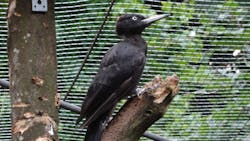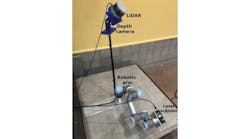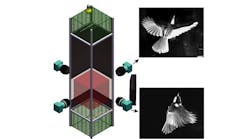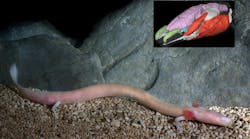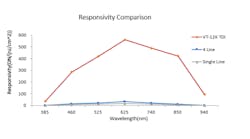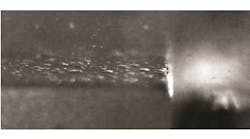Scientists at the University of Antwerp (Antwerp, Belgium) studying European Black Woodpeckers (https://bit.ly/3Oz5u4f) have been making use of high-speed imaging technology to help gain insight into questions revolving around the birds’ primary occupation of repeatedly hammering their beaks into trees.
More specifically, the researchers used the high-speed cameras to help gain insights into how a woodpecker extricates its beak if it has driven it too deeply into wood. This actually occurs when the birds are involved in behaviors such as excavating a hollow space in a tree to make a nest.
Sam Van Wassenbergh of the University of Antwerp has been studying woodpeckers for several years. As anyone who has ever listened to a woodpecker at work on a tree knows, the birds strike extremely fast and with varying degrees of force. The types of strikes can vary; when the bird is making noise to announce its presence or trying to attract a mate it can strike up to 20 times per second, a behavior known as “drumming.” However, when the birds are excavating, such as when they are trying to hollow out a tree to make a nest, the strikes are slower, 2-3 times per second, but they are done with much more violent force, Van Wassenbergh says.
And, occasionally, the bird will hammer the tree hard enough so that its beak gets temporarily stuck in the wood.
In 2022, Van Wassenbergh and his team conducted research to try to ascertain how woodpeckers extricate their beaks on those occasions when they embed themselves deep enough into wood to become stuck.
“We wanted to look at the moment of the impact of the beak by the woodpecker, so that’s just a very short moment —I think it takes about 4 milliseconds to decelerate during the impact,” Van Wassenbergh says. “So, we needed a high-speed camera.”
Because it’s virtually impossible to predict when and where a woodpecker will land or when it will start pecking, the camera needed to be easy to handle and portable, Van Wassenbergh says.
“We went to zoos in Europe and shot high speed videos of woodpeckers there,” he says.
“It was all hand-held, no tripod. You don’t know where the bird is going to land, so that was quite challenging even to get a few good shots with these cameras.”
Ultimately, using a Mikotron (Unterschleissheim, Germany) TS3 camera that can shoot up to 4,000 fps, the team shot high-speed videos of black woodpeckers, in lateral view, as they were pecking, taking video of one adult bird in Alpenzoo Innsbruck (Austria) at 500 fps at 1280×1024 pixels and a second in Tierpark Goldau (Switzerland) at 1500 or 1533 fps at 704×564 pixels. Both birds were pecking at hardwood tree trunks of about 0.3 m diameter. Ultimately, they chose and analyzed 10 beak retraction event videos, five from each bird.
To study the kinematics of the beak movements, the team recorded pixel coordinates of eight anatomical landmarks with frame-by-frame tracking using XMAlab 1.5.5 (Brown University, Providence RI, USA). They also digitized one image from each video of the beak tip and the back of the head to scale the pixel coordinates to absolute dimensions. They also used low-pass filtering, using a fourth-order zero phase-shift Butterworth filter with a cut-off frequency of 70 Hz, to remove the high-frequency noise resulting from manual landmark digitization.
What they ultimately were able to observe, quantify, and document, via high-speed imaging, was that, instead of simply pulling their heads back to remove a temporarily stuck beak, the birds move their heads with a series of very quick rotations and up and down motions, a behavior pattern not previously identified or recorded, Van Wassenbergh says.
